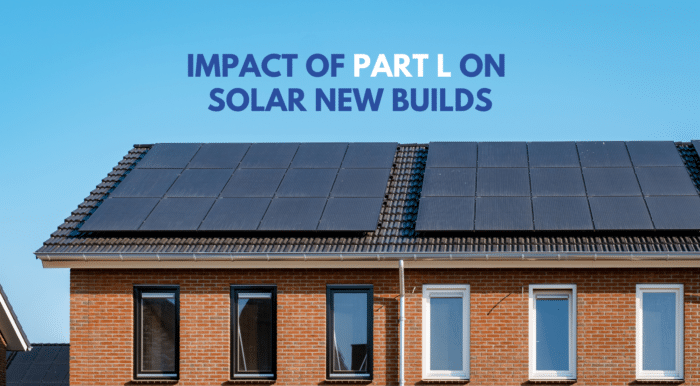In the quest for a sustainable future, the UK Government’s ambitious 2050 Net Zero Target is propelling the housing industry toward groundbreaking changes. The imminent Future Homes Standard, scheduled for implementation in 2025, is a pivotal step, signalling a ban on fossil fuels in all new homes. As an immediate precursor, the Interim Part L building regulations will usher in a new era where the majority of new homes in England and Wales will integrate solar panels into their construction—a practice already established in Scotland.

Shaping the Future of Sustainable Homes
These regulations are administered by the Department for Levelling Up, Housing and Communities (DLUHC). They aim to slash carbon dioxide emissions in new homes by up to 80%, surpassing current building standards by 2025. The resulting homes will set a higher benchmark for energy efficiency, incorporating low carbon heating, enhanced insulation, ventilation, and standard low-energy lighting.
To meet the Target CO2 Emission Rates (TER), new homes will also require a renewable energy source. With solar PV emerging as a cost-efficient frontrunner.
While the full implementation of the Future Homes Standard is set for 2025, the impending changes to Part L starting from June 2022 will serve as an interim measure, paving the way for smoother adaptation.
Of the 180,000 new homes constructed in England annually, a mere 10% currently feature solar PV. However, with the enforcement of the new regulations, this figure is anticipated to skyrocket to 80%. This would significantly impacting the solar supply chain and creating a substantial surge in demand for these technologies.
Understanding the Why
The modifications to Part L, alongside new regulations such as Part F (ventilation), Part O (overheating), and Part S (electric vehicle infrastructure), serve as a stepping stone to the monumental changes expected in 2025 with the Future Homes Standard. This ambitious agenda is geared towards enhancing the UK’s housing stock and elevating energy efficiency standards.
Implications for Solar Builds
Part L is particularly crucial for the commercial solar sector. Introducing a new Standard Assessment Procedure (SAP) calculation, known as SAP10. This calculation, measuring the Dwelling Emission Rate (DER) and the Target Emission Rate (TER), is integral for ensuring compliance with the new standards.
Before delving into any new commercial solar projects, collaboration becomes paramount. Builders, planners, and tradespeople must unite to align their efforts from the project’s inception. The end of the transition period signals a new era, emphasising the importance of adapting to the updated regulations.
Solar PV Mandate
One significant change mandates that any new-build properties with gas central heating or an electric boiler must now incorporate solar PV by law. Alternatively, a ground or air source heating system must be in place to meet SAP10. The emphasis on renewable and low-carbon energy sources positions solar PV as a key player in the commercial solar landscape.
Wastewater Heat Recovery and Insulation Standards
Part L also encourages the use of wastewater heat recovery systems in new-build projects. Converting lost heat into a valuable energy source. Additionally, stringent insulation standards demand a minimum thickness of 150mm for various applications, ensuring energy-efficient properties.
Challenges and Solutions
While these changes may present challenges. With early collaboration, careful planning, and an understanding of the broader context can pave the way for successful solar projects. We recommend focusing on educating all stakeholders, including homeowners. In particular about the long-term benefits of these changes. Emphasising that they are investments in future-proofing homes for years to come.
For housing developers navigating these transformative changes, early collaboration with Eclipse Energy Renewables can prove instrumental. Partnering with us ensures a seamless transition to meet these new standards without impeding your build programs.
Get in touch to learn more about how solar PV aligns with the evolving regulations and the risks associated with delayed planning for Part L.